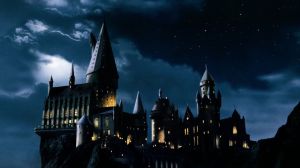To its credit, Rorschach #1 is the first Watchmen-derivative comic published by DC Comics that does not attempt to ape the original with a constant barrage of visual parallels, but the comic still falters to entertain or justify its own existence in the midst of sustained controversy. Set in the modern day world of Watchmen, decades after the events of the original comic and aligning with the HBO original series, the debut issue of Rorschach is a dull whodunit story that struggles to get readers invested in the world. Rorschach, written by Tom King and drawn by Jorge Fornés, spends most its pages methodically introducing the world of Watchmen—showing how it has changed over the last 25 or so years while investigating the identity of a would-be presidential assassin who died dressed as Rorschach at a campaign rally. Although the comic attempts drawing parallels to the current presidential election to build some stakes, the creative team shies away from taking a stance on modern politics likely to avoid controversy. What we’re given instead is a feckless comic book that tries its best to tap dance around landmines, both in American politics and the innate controversy that comes with returning to the story of Watchmen.
Videos by ComicBook.com
Whenever I read Watchmen content sans Moore and Gibbons, the first question I ask is “Why did this need to be made?” This question stems from the publication of the original Watchmen series, which led to a famous disagreement between Alan Moore and DC Comics over the rights to the comic. When Moore agreed to write Watchmen, he and Gibbons had a clause in their contracts that allowed for the rights to the comic to revert back to the creators once DC ceased publishing the comic for one year. The unprecedented success of Watchmen meant that Moore and Gibbons never regained those rights, and Moore has very publicly objected to DC publishing any sort of derivative work since. Going against the wishes of one of the most important and influential comics creators in history is no small matter, and examining Rorschach (and other non-Moore Watchmen work) demands that context be included.
In Rorschach #1, the main struggle is that the opening issue gives no compelling reason why this comic needs to use characters from Watchmen besides as a means of advertising. There are some minor ties to the HBO Watchmen miniseries, there’s a reference to an incident in Oklahoma involving Rorschach costumes and Robert Redford is still president (albeit one who’s about to lose to a Republican challenger). But even those ties are literally superficial—the most stunning bit of this issue is that there isn’t a single obvious non-white character appearing anywhere in the series, which seems incredulous given the themes of the 2019 HBO series. Besides those minor references and some visual nods to the original series, there appears to be a conscious distancing from the original Watchmen. While I personally prefer that to the hamfisted homages found in Doomsday Clock and Before Watchmen, it still leads to the question as to why this story needed to be told with this character.
There are a few other odd moments that also need to be addressed—the opening issue introduces an obvious Steve Ditko stand-in who is presented as the likely identity of the dead Rorschach. It’s strange that (not) Steve Ditko is an assassin in this timeline, but apparently he was radicalized by liberal philosopher Hannah Arendt. That’s odd because Arendt wrote an entire book about the Nazi party and how the organization, rather than its individual members, are to blame for the crimes committed during World War II. I’m unsure how someone can take that message and present it as a philosophy supporting the murder of politicians. It’s a line of thinking meant to show that anyone can be radicalized from any message, which is a little “both sides” moment not supported by any actual history.
We also get cameo appearances by Otto Binder (the creator of Captain Marvel) and Frank Miller, the latter of whom is still living. Miller has a good relationship with DC Comics, but the whole sequence is off-putting given the underlying controversy of respecting legendary creators. Does Miller know that he’s now a Watchmen character? Why feel the need to add Miller or Binder (or the tragic death of Binder’s daughter Mary) to this comic? It simply makes no sense and reads like an uncomfortable gesture given everything that Watchmen represents to many creators. The entire subplot is terribly disrespectful bordering upon outright gross, and it is a major distraction to anyone familiar with either comics or European history.
On the plus side, Rorschach is a star-making turn for Fornés. While the script doesn’t give Fornés a ton to work with, it’s an undoubtedly lovely comic. Fornés captures the issue’s (unnamed) investigator brooding and does some excellent work with a few bits of action. The comic also deftly avoids the exhausted 9-panel grid, which offers a welcome sight to anyone who has read Tom King’s other high profile work or any other comic with ties to Watchmen.
Rorschach #1 is an underwhelming first issue, one that really struggles to provide any sort of message or even justify its usage of the Watchmen property. The comic falters under any real scrutiny and spends so much of its space struggling to build atmosphere that it fails to actually provide anything of actual substance. It’s just another entry in a string of mediocre Watchmen knockoff comics that only serves to remind readers of the relative importance (and brilliance) of the original series in comparison.
Published by DC Comics
On October 13, 2020
Written by Tom King
Art by Jorge Fornés
Colors by Dave Stewart
Letters by Clayton Cowles
Cover by Jorge Fornés








